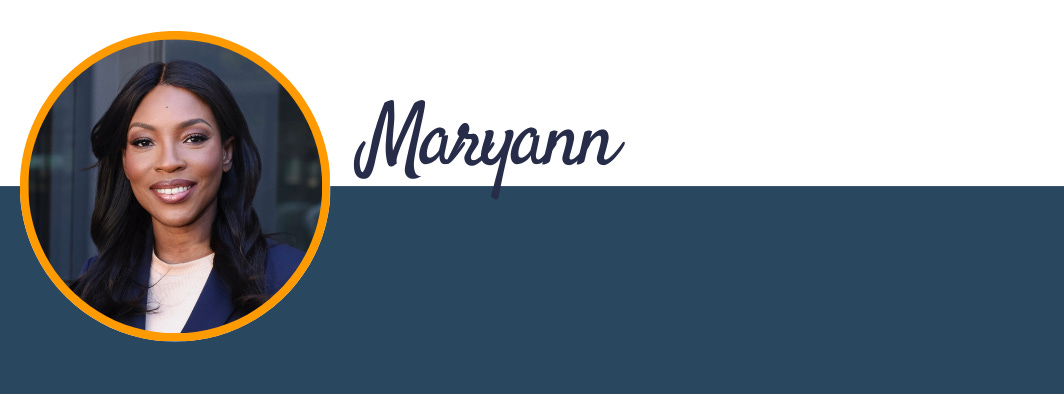Investing for Beginners
A Guide to Wealth Building
Welcome to the latest issue of the Femmehealth Ventures Publication. Your trusted source for insightful analysis of femtech innovations through an investor's lens, helping you identify the latest opportunities in women's health technology.
If this email was forwarded to you, you have awesome friends—click below to join. Don’t forget, you can always explore our archives to catch up on any past stories.

So You’re Ready to Start Investing. Now What?
Let’s say you’ve done all the “right” things. You’ve been saving diligently; you’ve got some cash tucked away in a bank account… and it’s just sitting there. Earning little to no return.
You’ve read a few books and watched a few videos. You’re convinced—investing is key to building long-term wealth. But now you're staring at your screen wondering: Where do I even begin?
I’ve been there. Twenty years ago, I asked the same questions.
Is this the right time? What if I lose everything? Isn’t investing risky?
If you’re asking those questions, you’re not alone—and you’re already doing something right: pausing to think intentionally.
Let’s walk through the foundational steps I wish someone had shared with me when I started.
Why Doing Nothing With Your Money Is Riskier Than You Think
Let’s talk about inflation. It’s quiet, invisible and relentless.
As I write this, inflation in the Eurozone—as measured by the Eurozone Consumer Price Index (CPI)—is sitting around 2.9%. That might sound like a small number but let’s make it real.
Imagine this: last year, your favourite loaf of bread cost €2. Today, it’s €2.06. You didn’t change anything—same bakery, same bread—but your money now buys less than it did 12 months ago. That’s inflation in action.
You might think, “Well, at least my money is safe in the bank.” But in reality, as long as your money is growing at a rate that’s lower than inflation, then inflation is quietly eroding its value, like a slow leak in a tyre you didn’t notice until you’re stranded.
Doing nothing with your money isn’t neutral. Over time, it’s choosing to get poorer. That’s why investing isn’t just about growing wealth. It’s about protecting what you’ve already worked hard to earn.
Investing Isn’t Just for “Experts”. It’s for Anyone Ready to Build
Here’s the truth: you don’t need to have it all figured out to get started. You just need a solid foundation and a willingness to learn as you go.
A Few Common Ways to Invest:
Stocks: Shares of companies. When a company grows and becomes more profitable, its share price may rise and so does the value of your investment. But stocks can also go down, so it’s important to invest with a long-term view.
Bonds: Think of bonds as lending your money to a government or company. In return, they promise to pay you interest regularly and return your money at a set date in the future. They’re typically more stable than stocks, but with lower returns.
ETFs (Exchange-Traded Funds): If picking individual stocks feels overwhelming, you’re not alone. ETFs are a great place to start. An ETF is like a basket of investments—stocks, bonds, or other assets—all bundled together into one product that you can buy or sell like a regular stock. They offer built-in diversification (meaning your risk is spread out), and many track popular indices like the S&P 500 or MSCI World. They’re often low-cost and beginner-friendly.
Funds (Mutual Funds): Similar to ETFs, but they’re not traded on the stock exchange. Instead, you buy into a fund that’s actively managed by a professional who selects investments on your behalf. They can offer great diversification but usually come with higher fees.
These are just the starting points, and yes, every investment comes with some risk. But risk can be managed. And more importantly, risk can be (and should be) aligned with your values and goals.
Before You Invest, Ask Yourself Three Essential Questions
1. What do you want your money to do?
Not just for you, but for your family, your future, maybe even the world?
Maybe it’s buying back your time. Funding your daughter’s education. Supporting women-led innovations that could change the course of healthcare.
Your “why” is your compass. Without it, investing becomes reactive, swayed by headlines and hype. But when you’re anchored to a clear purpose, every decision, even the hard ones, becomes easier to navigate.
So ask yourself: What kind of life am I building? What role will money play in that story?
2.What’s your risk appetite?
This isn’t about being fearless. It’s about being honest. Are you the kind of person who checks your investment account weekly, or do you prefer to set it and forget it?
Do you lose sleep over market dips, or do you see them as buying opportunities?
There’s no wrong answer, only the one that reflects who you are.
The goal isn’t to eliminate risk (that’s not possible); it’s to find your balance. One that feels challenging but not overwhelming. One that lets you grow while sleeping well at night.
3. What’s your asset allocation?
This is where your purpose and your personality meet strategy. Asset allocation is how you divide your investments between different types of assets: stocks, bonds, ETFs, real estate, and more.
Why does this matter?
Because research consistently shows that your asset allocation, not your ability to time the market or pick the perfect stock, is the biggest driver of long-term investment returns. Up to 80% of your results will come from how you divide your pie, not which slice you obsess over.
A well-aligned asset allocation reflects your risk tolerance and your goals, not someone else’s.
Lay Your Financial Foundation First
Before you dive into markets, make sure you’ve set yourself up for resilience:
Pay off high-interest debt. Credit cards and personal loans can quietly eat away at your wealth.
Build an emergency fund. Think 3–6 months of essential expenses, separate from your investments. This gives you breathing room and keeps you from needing to pull out funds prematurely.
The Long Game
Investing isn’t about chasing quick wins. It’s about building a future. It’s about positioning your capital to grow, to serve, and to support the life you’re designing. There will be ups and downs. But with clarity, patience, and a grounded approach, you can build something meaningful.
So if you’re ready to begin, start with intention, and know you’re not alone. We’re building the future together, one smart, values-aligned decision at a time.
Ways to Connect with FemmeHealth Ventures
Thanks for reading. If you liked what you read, consider:
signing up for Femmehealth Ventures newsletter, which is published weekly
sending to a friend or co-worker
Disclaimer
The content in this newsletter is for informational purposes only and does not constitute financial, investment, legal, or medical advice. Opinions expressed are those of the author and may not reflect the views of affiliated organisations. Readers should seek professional advice tailored to their individual circumstances before making decisions. Investing involves risk, including potential loss of principal. Past performance does not guarantee future results.




